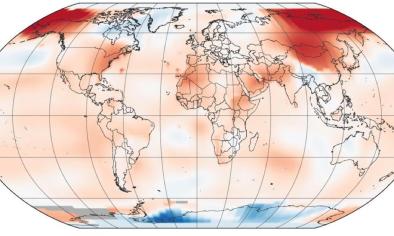Influence of high-latitude atmospheric circulation changes on summertime Arctic sea ice
Archivist's preface: The state of the climate at any time, including the Arctic, reflects both short-term natural variability and long-term climate change. Sea ice loss in the Arctic has long been greater than the models have predicted, leading scientists to deduce that the scale of the decline must be due to a combination of long-term climate change and short-term natural variability running in the same direction.
This study attempts to quantify the exact contribution of natural variability. It pegs about 40% of the decline to natural variability, mostly due to so-called circulation change (i.e. semi-regular shifts in large-scale weather patterns, such as the polar jet stream).
However, climate models do not reliably model circulation changes, nor do they reliably detect the effect of climate change on circulation changes. Therefore, though the model found no evidence of the fingerprint of climate change on the circulation changes in question, there is some inherent uncertainty around this finding.
- States that the Arctic has seen rapid sea-ice decline in the past three decades, whilst warming at about twice the global average rate
- Presents evidence that trends in summertime atmospheric circulation may have contributed as much as 60% to the September sea-ice extent decline since 1979
- States that a tendency towards a stronger anticyclonic circulation warmed and moistened the lower troposphere, thereby increasing the downwelling longwave radiation above the ice
- Replicates the observed thermodynamic response with model experiments, using reanalysis data constraining atmospheric circulation
- Results indicate that the near-surface changes are dominated by circulation changes rather than feedbacks from the changing sea-ice cover
- Finds that internal variability dominates the Arctic summer circulation trend and may be responsible for about 30–50% of the overall decline in September sea ice since 1979
Related Content




